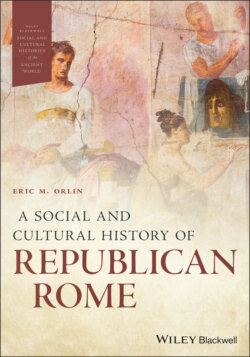Читать книгу A Social and Cultural History of Republican Rome - Группа авторов - Страница 19
Coins
ОглавлениеCoins provide a third type of primary source, an object that was actually used by the people of the Roman world. In terms of sheer volume of evidence, coins are the most numerous of any surviving source. The Romans began minting coins in the third century BCE; already one might ask why the Romans did not start minting coins before this point: coins were in use in other parts of the Mediterranean long before. What did they use in the marketplace before this time and why did they start now? Once the Romans start minting, coinage contributes greatly to our understanding of Roman economic history, but coins in the ancient world served other functions beyond just a medium of exchange. While the Roman state guaranteed the value of the coinage minted under its authority, it provided no standard imagery. Rather, it delegated the physical task of minting coins to individuals, sometimes to relatively minor functionaries, and so coinage design thus might change according to a variety of factors: historical events or family ties could play a large role. We might think of how designs on postage stamps today reflect the values and interests of the countries that produce them: a stamp with Elvis on it can tell us about the importance of rock-and-roll in the United States. In Rome, some minters placed designs intended to further their own political ambitions or those of a political ally, while other coins revealed the shared values of the Romans (Figure 1.6). Because of their large number and the fact that they can usually be dated with great precision, coins provide a chronological means to understand both the Roman economy and a range of political and social issues.
Figure 1.6 Silver denarius, minted 43 or 42 BCE.
